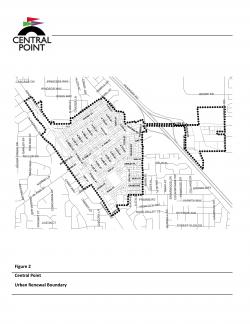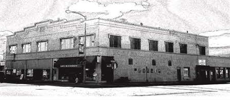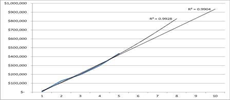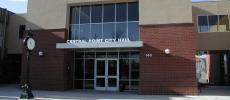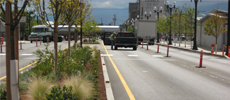-
City Services
-
- Departments Administration Building City Recorder Community Development Community Emergency Response Team Finance Floodplain Management Human Resources Parks & Recreation Public Works Police Urban Renewal Utility Billing
- Commissions and Committees Arts Commission Budget Committee Citizen Advisory Committee Parks Foundation Parks and Recreation Commission Planning Commission
-
Agendas and Minutes
City Council
-
-
Community
-
- Schools Crater High Scenic Middle Central Point Elementary Mae Richardson Elementary Jewett Elementary School District 6 Map Rogue Community College Southern Oregon University
- Special Events Calendar of Events Park Special Events Recreation City Activity Guide City Parks British Soccer Camp Jackson County Expo Bear Creek Greenway Bike Path Rogue River Greenway Bike Path Hiking Paths Made in Southern Oregon
- New to Central Point Chamber of Commerce Central Point Library Justice Court Utility Services Senior Center Post Office Airport Get Involved Commissions & Committees Volunteer Parks Foundation Elections
-
-
Resources
-
- Online Resources Pay Your Water Bill Pay a Ticket Online Job Opportunities Municipal Code Documents and Reports Forms and Applications City Documents Library Portal Water Usage Portal COVID-19 Updates Alerts and Notifications Email Subscriptions Maps
- Events and Meetings Agendas and Minutes Ordinances Resolutions Calendar Local Services Jackson County City of Medford Justice Court Recycling
- Connect Submit a Request or Concern Staff Directory Facebook Twitter In the News City News City Newsletters
-
-
Business
-
- Start a Business Business Licenses Chamber of Commerce Building/Construction Building Permits Inspection Requests Design Criteria Building Forms Bids and RFPs Forms and Permits
- Community Development City Projects Zoning & Land Development Code Long Range Planning Maps
- Urban Renewal Urban Renewal Home
-
-
Public Safety
-
- Communications Mission & Core Values Organizational Chart What We Do Patrol School Resource Officers (SRO) Community Service Officers Police Support Specialists Police Volunteers
- Get Involved Join the Team Becoming a Volunteer Neighborhood Watch Community Emergency Response Team Requests Police Reports and Records Check
- Resources Municipal Code Traffic Safety Police Events/Calendar Court Information Vehicle Impound Release Frequently Asked Questions
-
Updated November 17, 2022
What is happening now?
The Central Point Development Commission adopted the Updated Downtown and East Pine Redevelopment Plan to add property and projects. This must be done in a specific way as directed by the Plan. Properties are proposed to be added to the urban renewal area to allow projects located on the properties to benefit from the use of urban renewal funding. The proposed projects are:
The Bear Creek Greenway Design and Improvements project will improve the publicly owned lands adjacent to the Bear Creek Greenway from E. Pine Street to the Table Rock Overpass. The newly created park system will balance passive and active areas, including walking paths, benches, tables, pavilions/gazebos, playgrounds, restrooms, bicycle improvements, and various recreational areas/opportunities. It is anticipated that this project will start in fiscal year 2025/2026.
The Beebe Road Extension and Bridge Extension project will extend Beebe Road from its current intersection with Gebhard Road to the west through Jackson County Expo to connect with Penninger Road. Includes intersection improvements at Penninger & Beebe Roads and Beebe & Gebhard Roads. It is anticipated that this project will start in fiscal year 2027/2028.
The Central Point Community Center was already a project in the Plan, but the project has evolved over time and Jackson County is participating in this project. The project description has been updated to reflect this partnership. This project will have multiple funding sources, including urban renewal funds. It is anticipated that this project will begin in FY 2024.
How Does Tax Increment Financing Affect Property Taxpayers?
Property taxpayers will not see an increase in property taxes as a direct result of a new urban renewal area or an amendment to an urban renewal plan. The allocation of revenues received from a property taxpayer’s payment is changed as a portion of that payment would go to the new urban renewal area. This is called “division of taxes” and is the administrative way that assessors must calculate the urban renewal revenue.
When an urban renewal area is adopted in a city, all property taxpayers see a line item on the property tax bills that shows a division of taxes for urban renewal. This is a result of the property tax limitations in Oregon. Again, this is not an increase in property taxes, merely a division of taxes already paid. Since urban renewal already exists in Central Point, all property owners in Central Point already see this line item on their property tax bills. Again, this does not mean that you pay additional taxes, but is a division of taxes already paid.
What is Urban Renewal?
Urban renewal is a program authorized under state law and implemented locally that allows for the concentrated use of property tax revenues to upgrade certain designated areas of a city. It is not a new tax or an increase in taxes. These urban renewal areas are called “blighted” by state statute and typically contain sections of a city that are underdeveloped, have infrastructure needs and are not contributing fully to the local economy.
How does Tax Increment Financing Work?
While urban renewal itself does not increase property tax rates, it does function on the increases in property tax revenues from year-to-year. An individual property tax- payer’s property taxes may increase for two reasons, one, the assessor can increase property values at a rate of 3% per year and does so in most cases, and, two, if a substantial renovation is completed on a property resulting in increased assessed valuation.
When an urban renewal area is created, the property tax revenue from that area is diverted into two revenue streams. The first stream is what is called “the frozen base”. The frozen base is the property tax revenue from the total assessed value of the urban renewal area from the year the urban renewal area was formed.
The frozen base revenue stream continues to go to the regular taxing jurisdictions, such as the city and the county. The second revenue stream is any increase over the frozen base which is called “the increment”. The increment represents the basis for tax increment financing and is any increase in property tax revenues above the frozen base. The second revenue stream goes to the urban renewal agency for use on projects, programs, and administration.
Who Administers an Urban Renewal Program?
The Central Point Development Commission administers an urban renewal program in the downtown and East Pine Street areas. This urban renewal plan (Plan) was adopted in 2012.
The Central Point Development Commission board members are the Mayor and City Council.
How Does Tax Increment Financing Affect Overlapping Taxing Districts?
Taxing jurisdictions gain revenues through the collection of property taxes. During the use of tax increment financing, the permanent rate property taxes on the growth in assessed value in the urban renewal area are allocated to the Central Point Development Commission and not the individual taxing districts. The taxing districts are still able to collect the property tax revenues from the assessed value of the frozen base but increases in revenues are allocated to the Urban Renewal Agency for use within the urban renewal area. In many urban renewal areas, that growth from new investment would not have occurred but for the use of urban renewal which has stimulated the growth.
The impact on schools and education service districts is indirect, as they are funded through a state allocation based on per pupil counts. Property taxes fund a portion of the State School Fund, but not all of it. Once an urban renewal area is terminated, there generally will be an increase in property tax revenues to all taxing jurisdictions. This increase of property tax revenue is a result of the ability to concentrate funding in a specific area, encouraging the area to develop properly.
You may also provide input by contacting:
City of Central Point Urban Renewal Executive Director
140 S. 3rd Street
Central Point, OR 97502
In 2011 the City Council formed the Central Point Development Commission ("CPDC") to manage urban renewal activities for the City. With a focus on revitalizing blighted conditions in the downtown area, the CPDC adopted, The Downtown & East Pine Street Corridor Revitalization Plan ("Urban Renewal Plan").
Using tax increment financing, the CPDC implements the Urban Renewal Plan, which includes fifteen projects to encourage and leverage private investment in the area. The projects are anticipated to take 25 years to complete and include street improvements, streetscaping, lighting, intersection improvements, parking facilities, undergrounding of utilities, infrastructure improvements, development of a community center, a fire safety project, and an economic development incentive program.

